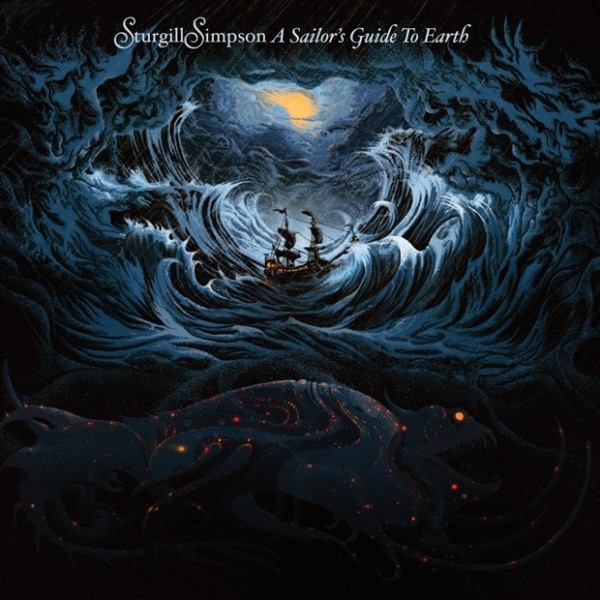Words by Brian Salvatore
There is a large contingent of music fans that lost interest in country music when it became something closer to slick, shiny pop music. Gone were confessional stories and masterful instrumental prowess, replaced by indistinguishable faces and emotionless deliveries.
If you are, or if you know, a fan that walked away from country music, you need to get a copy of A Sailor’s Guide to Earth in your/their hands.
Simpson’s country music has far more in common with Dolly Parton, Glen Campbell, and Merle Haggard than it does with just about anything coming out of the Nashville country scene today. The album has hooks, sure, but they are presented with horns, steel guitars, and impassioned vocals. These songs sound like they were dormant for 40 years, and were just thawed out, full of vigor and energy, and force you to take note.
The album feels incredibly varied, and its nine songs absolutely fly by. “Keep it Between the Lines” would’ve been a top 10 hit in 1970, full of swampy organ, soaring pedal steel, and a thumping horn section, while telling one of the quintessential songwriting stories – advice from a father to his son. That track is preceded by “Breakers Roar,” a gentle ballad that mixes dreams and the pull of the ocean into a song that never quite resolves itself, resting somewhere between heartache and slumber.
But halfway through the album, something happens that is totally unexpected: Simpson covers Nirvana’s “In Bloom.”
He doesn’t just strip it down to an acoustic ballad or crank it up to a barnstormer. The mood is certainly low at the start, due in part to Simpson adjusting the chord progression during the verses to limit the angsty build up to the chorus – instead, they sound tender and gentle. That tenderness is echoed in the lyric that Simpson adds to the end of the chorus – Kurt Cobain sings “He don’t know what it means when I say,” Simpson sings “He don’t know what it means to love someone.”
After the second verse, the song breaks down into a string and horn workout that couldn’t be further from Butch Vig’s booming, distorted production before fading away into the ether from which it came.
It is unfair to discredit some of the second half’s triumphs, as there are many (especially the finale “Call to Arms”) – there really isn’t a sour note or mediocre song on the record – but “In Bloom” sets such a high bar that it is hard to see beyond it. Country music is more accepted than ever in some circles, but this song could be that crossover to folks who never really got it before; Simpson’s vocals are incredibly passionate and convey a similar message to Cobain’s without sounding anything like him.
This is the rare song that could unite grandma, who was a housewife listening to Waylon Jennings, her son who was a big Nirvana fan, and her grandchild who heard the Sturgill Simpson cover on Spotify’s “Discover Weekly” playlist. And once they hear that song, if they go as far as seeking out the album, they can’t help but be impressed by what else Simpson is bringing to the table.
‘A Sailor’s Guide to Earth’
Atlantic
© April 15th, 2016
TheWaster.com | In Bloom
4.20.16



